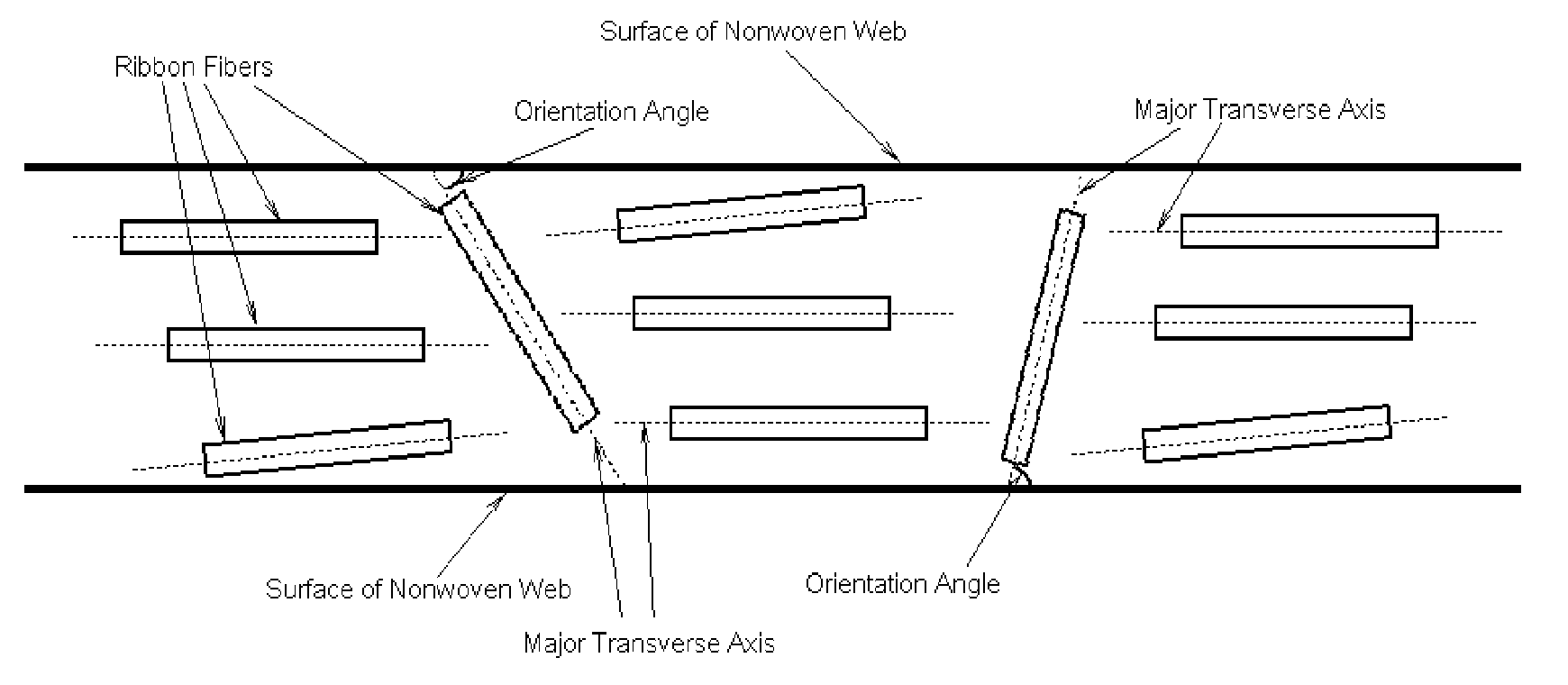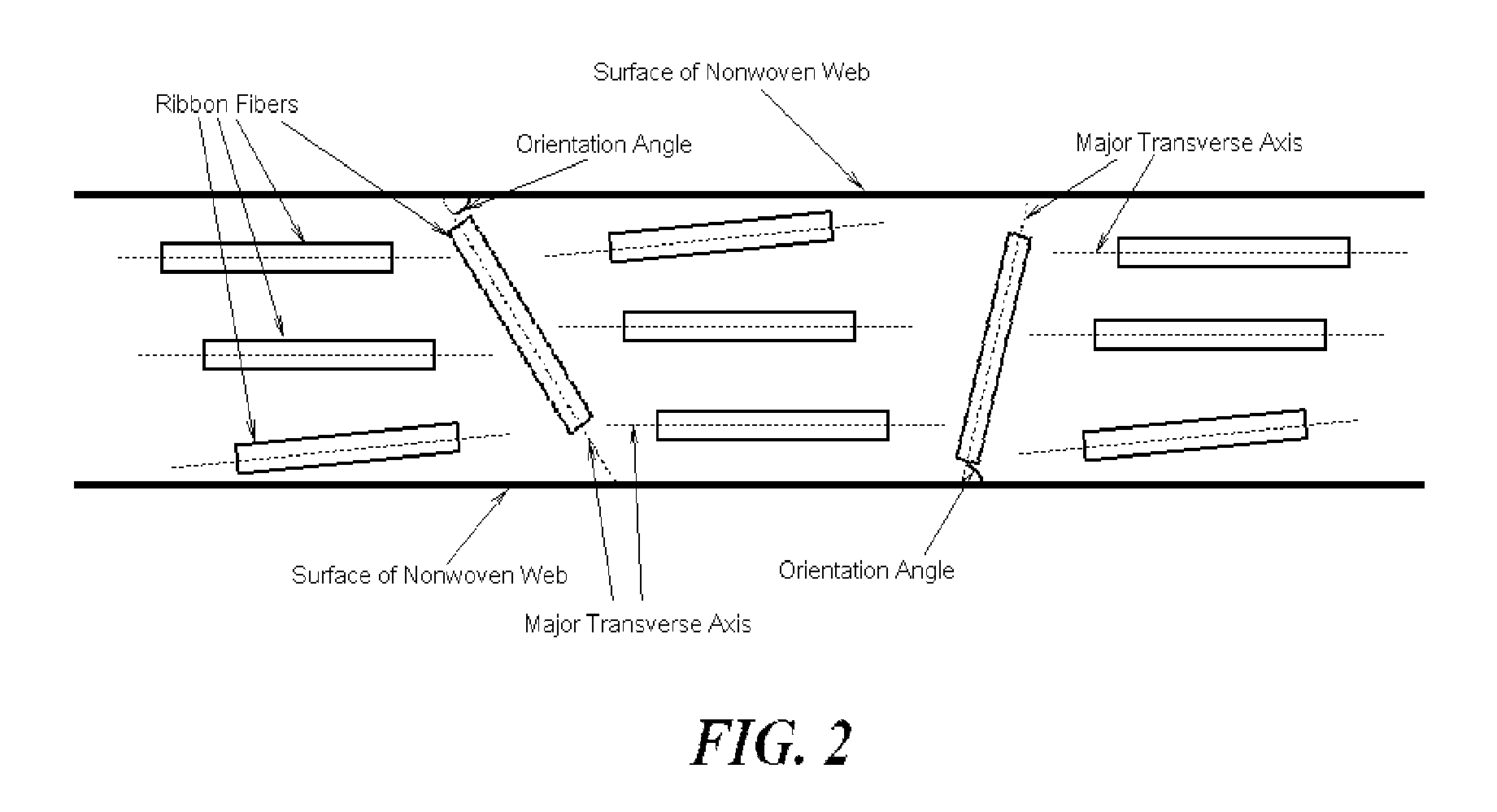Wet-Laid process to produce a bound nonwoven article
a nonwoven article and wet-laid technology, applied in the field of wet-laid process to produce bound nonwoven articles, can solve the problems of inability to significantly modify the water permeability of the binder composition used above, limit the application of the binder to specific end uses, and the inability to adapt to a wide range of end-use products
- Summary
- Abstract
- Description
- Claims
- Application Information
AI Technical Summary
Benefits of technology
Problems solved by technology
Method used
Image
Examples
example 1
[0178]A sulfopolyester polymer was prepared with the following diacid and diol composition: diacid composition (71 mole percent terephthalic acid, 20 mole percent isophthalic acid, and 9 mole percent 5-(sodiosulfo) isophthalic acid) and diol composition (60 mole percent ethylene glycol and 40 mole percent diethylene glycol). The sulfopolyester was prepared by high temperature polyesterification under a vacuum. The esterification conditions were controlled to produce a sulfopolyester having an inherent viscosity of about 0.31. The melt viscosity of this sulfopolyester was measured to be in the range of about 3,000 to 4,000 poise at 240° C. and 1 rad / sec shear rate.
example 2
[0179]The sulfopolyester polymer of Example 1 was spun into bicomponent segmented pie fibers and formed into a nonwoven web according to the procedure described in Example 9 of U.S. 2008 / 0311815, herein incorporated by reference. During the process, the primary extruder (A) fed Eastman F61 HC PET polyester melt to form the larger segment slices into the segmented pie structure. The extrusion zones were set to melt the PET entering the spinnerette die at a temperature of 285° C. The secondary extruder (B) processed the sulfopolyester polymer of Example 1, which was fed at a melt temperature of 255° C. into the spinnerette die. The melt throughput rate per hole was 0.6 gm / min. The volume ratio of PET to sulfopolyester in the bicomponent extrudates was set at 70 / 30, which represents the weight ratio of about 70 / 30. The cross-section of the bicomponent extrudates had wedge shaped domains of PET with sulfopolyester polymer separating these domains.
[0180]The bicomponent extrudates were me...
example 3
[0186]The nonwoven webs of Example 2 having basis weights of both 140 gsm and 110 gsm were hydroentangled using a hydroentangling apparatus manufactured by Fleissner, GmbH, Egelsbach, Germany. The machine had five total hydroentangling stations wherein three sets of jets contacted the top side of the nonwoven web and two sets of jets contacted the opposite side of the nonwoven web. The water jets comprised a series of fine orifices about 100 microns in diameter machined in two-feet wide jet strips. The water pressure to the jets was set at 60 bar (Jet Strip #1), 190 bar (Jet Strips #2 and 3), and 230 bar (Jet Strips #4 and 5). During the hydroentanglement process, the temperature of the water to the jets was found to be in the range of about 40 to 45° C. The nonwoven fabric exiting the hydroentangling unit was strongly tied together. The continuous fibers were knotted together to produce a hydroentangled nonwoven fabric with high resistance to tearing when stretched in both directio...
PUM
| Property | Measurement | Unit |
|---|---|---|
| length | aaaaa | aaaaa |
| length | aaaaa | aaaaa |
| weight percent | aaaaa | aaaaa |
Abstract
Description
Claims
Application Information
 Login to View More
Login to View More - R&D
- Intellectual Property
- Life Sciences
- Materials
- Tech Scout
- Unparalleled Data Quality
- Higher Quality Content
- 60% Fewer Hallucinations
Browse by: Latest US Patents, China's latest patents, Technical Efficacy Thesaurus, Application Domain, Technology Topic, Popular Technical Reports.
© 2025 PatSnap. All rights reserved.Legal|Privacy policy|Modern Slavery Act Transparency Statement|Sitemap|About US| Contact US: help@patsnap.com



